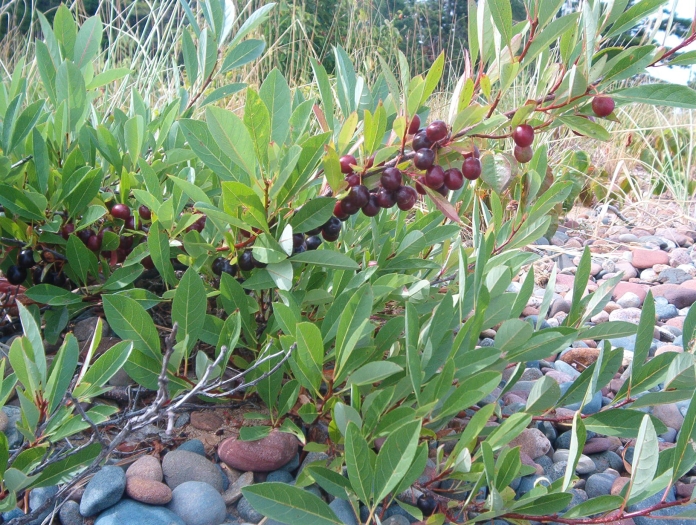Sand Cherry
(Prunus pumila)
Sand Cherry (Prunus pumila)
/
/

Super cyclist Wikipedia
Public domain




















































Estimated Native Range
Summary
The Sand Cherry is valued for its hardiness and drought tolerance, making it suitable for xeriscaping. It is also appreciated for its attractive spring flowers and edible fruit. This shrub is commonly used in naturalized plantings, as a ground cover, or in borders, especially in areas with challenging growing conditions. It thrives in full sun and requires well-drained soils, preferably sandy, with low water needs once established. While generally low-maintenance, it can be susceptible to pests such as borers and diseases like black knot. Pruning may be necessary to maintain its shape and encourage new growth.CC BY-SA 4.0
Plant Description
- Plant Type: Shrub
- Height: 2-6 feet
- Width: 5-8 feet
- Growth Rate: Slow
- Flower Color: White
- Flowering Season: Spring
- Leaf Retention: Deciduous
Growth Requirements
- Sun: Full Sun
- Water: Low
- Drainage: Medium, Fast
Common Uses
Bank Stabilization, Bee Garden, Bird Garden, Butterfly Garden, Drought Tolerant, Edible*Disclaimer: Easyscape's listed plant edibility is for informational use. Always verify the safety and proper identification of any plant before consumption., Erosion Control, Fire Resistant, Groundcover, Hedges, Low Maintenance, Rabbit Resistant, Salt Tolerant, Showy Flowers
Natural Habitat
Dunes, sandy prairies, and lakeshores in the Great Lakes region, upper Midwest United States, and parts of Canada
Other Names
Common Names: Dwarf Sand Plum, Sandcherry, Sandkirsche, Cerisier De Sable, Cerisier Nain, Ragouminier, Cerisier Des Sables
Scientific Names: , Prunus pumila, Cerasus floribunda, Cerasus prostrata, Prunus pumula,
GBIF Accepted Name: Prunus pumila L.